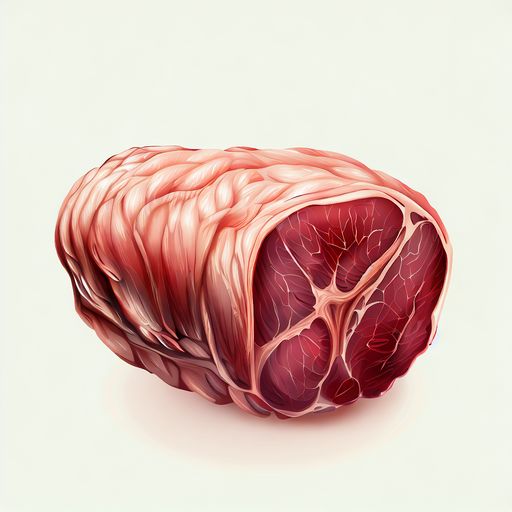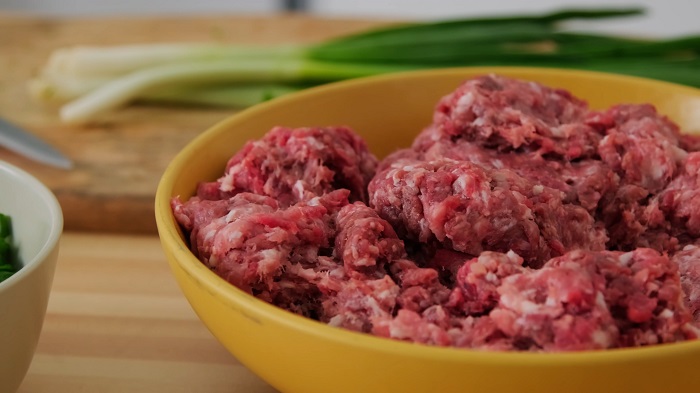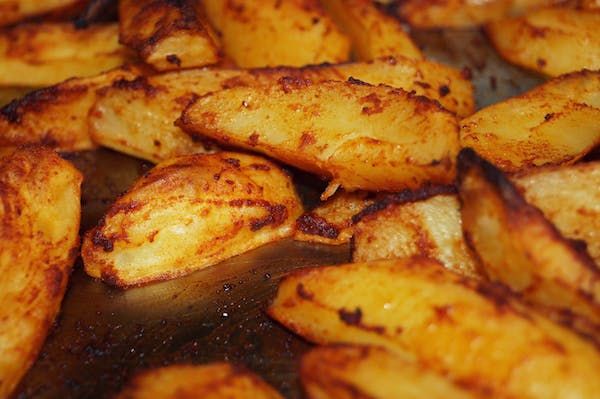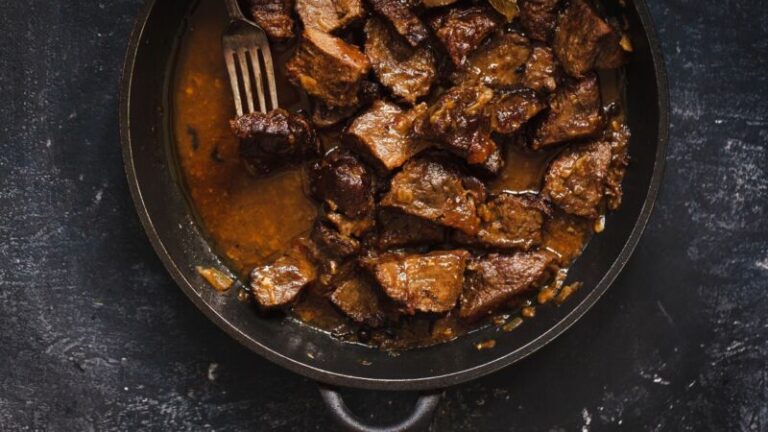What Does Lamb Taste Like?
Have you ever wondered what does lamb taste like? For those curious about trying this unique meat, lamb has a delicious, rich flavor with a tender yet firm texture when cooked properly. The taste of lamb can vary depending on how the animal was raised, its diet, the cut of meat, and the method of cooking. Read on to learn all about the distinctive lamb meat taste, the health benefits of eating lamb, and tips for cooking flavorful lamb dishes at home.
An Introduction to Lamb and Its Distinct Flavor Profile
Lamb is often described as having a pleasant gamy taste, meaning it has a stronger flavor compared to beef or pork. The meat has a subtle smoky and earthy flavor that comes from the animal’s grass-feeding. Lamb also tends to taste fattier than other meats due to its high fat content.
When cooked, lamb has a juicy, succulent texture thanks to generous marbling of fat. The meat is tender, though not as tender as filet mignon for example. Lamb contains a moderate amount of connective tissue in the muscle which must be properly cooked to achieve fork-tender results. When cooked just right, lamb chops, ribs, racks, shanks, and legs deliver an unrivaled mouth-watering experience.
To enhance lamb’s naturally rich flavor, chefs use various herbs, spices, and preparations like marinades. The most common seasonings paired with lamb include rosemary, garlic, mint, and yogurt-based marinades. When dining at nice restaurants, you may encounter more elaborate lamb dishes incorporating unique ingredients for depth of flavor.
The Distinct Taste of Lamb Chops, Racks, Shanks, and More

Let’s explore how the taste of lamb compares across the most popular cuts:
Succulent, Fatty Lamb Chops
Lamb chops come from the rib section and are considered one of the prime cuts of lamb. The meat here has a high ratio of fat to lean muscle, making the chops incredibly flavorful, tender, and juicy. These rib chops deliver a strong, gamy lamb flavor with a smooth, fatty mouthfeel. The chops can be pan-seared, grilled, or broiled for caramelization on the outside while keeping the inside tender. Lamb loin chops also offer a similar firm yet tender fatty texture.
Rich, Savory Lamb Rack
A lamb rack refers to the ribs with meat sliced between them. This cut comes from the upper rib section. Rack of lamb provides eye-catching presentation of the rib bones interspersed with slices of tender, buttery smooth meat. The rack has a refined yet hearty taste thanks to ample marbling of fat. Routinely seasoned with a garlic-herb crust or spice rub, lamb rack delivers incredible depth of flavor in each juicy bite.
Fall-Off-The-Bone Lamb Shanks
Lamb shanks offer the satisfying sensation of meat literally falling off the bone after long, slow braising. Connective tissue in the shanks breaks down over hours of simmering to yield melt-in-your-mouth results. This tough but flavorful cut transforms into a savory, ultra-tender delight. Braised lamb shanks have a rich, intensified meaty taste thanks to the extended cooking time which allows the lamb flavor to permeate through the dish.
Versatile Leg of Lamb
A whole leg of lamb is a large, versatile cut that can be roasted in the oven or grill. Legs contain a varied mix of leaner meat and wonderfully fatty sections. When roasted correctly, the leg remains moist and tender. The outer crust gets beautifully caramelized, enhancing the herbaceous taste of the meat. Sliced leg of lamb offers both tender and slightly chewy bites with a robust gaminess. The leg is often marinated then rubbed with an aromatic blend like rosemary, garlic, and lemon before roasting.
What Factors Affect the Taste of Lamb?

Several key factors impact the flavor and eating quality of lamb meat:
Diet – Grass vs. Grain
One of the biggest influences over lamb’s taste is whether the animal was grass-fed or grain-fed. Lambs raised exclusively on grass produce meat with a distinct, grassy flavor. The meat has a lower fat content and more omega-3 fatty acids. Grass-fed lamb has a subtler, sweeter taste compared to grain-fed.
Grain-fed or grain-finished lambs have a higher fat content with more marbling. The meat tastes fattier, richer, and has a stronger lamb-y flavor. Grain finishing also yields larger lambs with meatier cuts. Many consumers consider grain-fed lamb superior in terms of tenderness and taste.
Location and Breed
Where the lamb was raised affects its flavor too. New Zealand and Australian lamb are two of the most popular varieties. New Zealand lamb eats a diet primarily of grass, lending a milder and more tender taste. Australian lamb has a bolder, gamier flavor due to more exposure to open grasslands. Different breeds like Dorper or Merino lamb also impact flavor.
Activity Level and Health
An active lamb that roams free develops better muscle tone and blood circulation. This results in even marbling for enhanced tenderness and juiciness. Lambs that live calm, stress-free lives produce the best tasting meat.
Cooking Methods
How the lamb is prepared makes a big difference too. Grilling over an open flame, broiling, and pan roasting add caramelized flavors. Braising and stewing tenderize tougher cuts while infusing rich taste. The baking process concentrates flavors for bold lamb taste in the oven. Marinating and dry rubbing allow seasonings to permeate for added flavor dimensions.
The Many Health Benefits of Adding Lamb to Your Diet
In addition to its enticing flavor and texture when cooked, lamb also provides several valuable health benefits:
- Lamb is a high-quality source of protein, with over 25 grams per 3-ounce serving. The meat contains all the essential amino acids needed for building and maintaining muscle.
- Lamb provides key minerals like iron, zinc, and selenium. Iron helps prevent anemia while zinc boosts the immune system. Selenium acts as an antioxidant for cellular health.
- Lamb contains decent amounts of vitamin B12, supporting nerve function and energy levels.
- The anti-inflammatory nutrients in lamb may help reduce risk factors for chronic illnesses.
- Lamb provides conjugated linoleic acid (CLA) which may promote fat burning and weight management.
For optimal health, consume lamb in moderation along with plenty of vegetables, healthy fats, and fiber.
Classic Lamb Recipes to Make at Home
Here are two delicious, beginner-friendly lamb recipes to try cooking at home:
Simple Roasted Leg of Lamb
A roasted leg of lamb makes an impressive centerpiece for special occasions. The method is easy – simply coat with oil, herbs and garlic then oven-roast until browned and tender:
- Preparation: Rub a bone-in leg of lamb with olive oil, rosemary, thyme, garlic, salt and pepper. Roast at 350°F for 15-20 minutes per pound until the internal temperature reaches 135°F for medium doneness. Rest before slicing against the grain.
- For a one-pan meal, add baby potatoes and carrots around the lamb a halfway through roasting.
Pan-Seared Garlic Lamb Chops
These easy pan-seared lamb chops deliver a simple yet flavorful dinner option:
- Seasoning: Coat lamb rib or loin chops with olive oil, salt, pepper and garlic powder.
- Use a heavy skillet over high heat to brown the chops, about 3-5 minutes per side.
- Add fresh thyme, rosemary and sliced garlic to the pan along with chicken broth.
- Deglaze the pan, scraping up browned bits. Simmer until reduced to a glaze-like sauce.
- Off heat, stir in lemon juice and drizzle pan sauce over seared chops to serve.
Conclusion
Lamb has a unique, savory taste and tender texture when properly prepared. The gamy, fatty flavors of lamb offer a pleasant eating experience compared to other meats. Factors like the animal’s diet, breed, and cooking method all impact the taste of lamb. This nutritious meat provides protein, essential nutrients, and antioxidant benefits when consumed in moderation. Roasted lamb and pan-seared lamb chops make for delicious yet approachable recipes to savor lamb’s flavor at home. The next time you see lamb on a restaurant menu or at your local butcher, consider giving this tasty meat a try!






